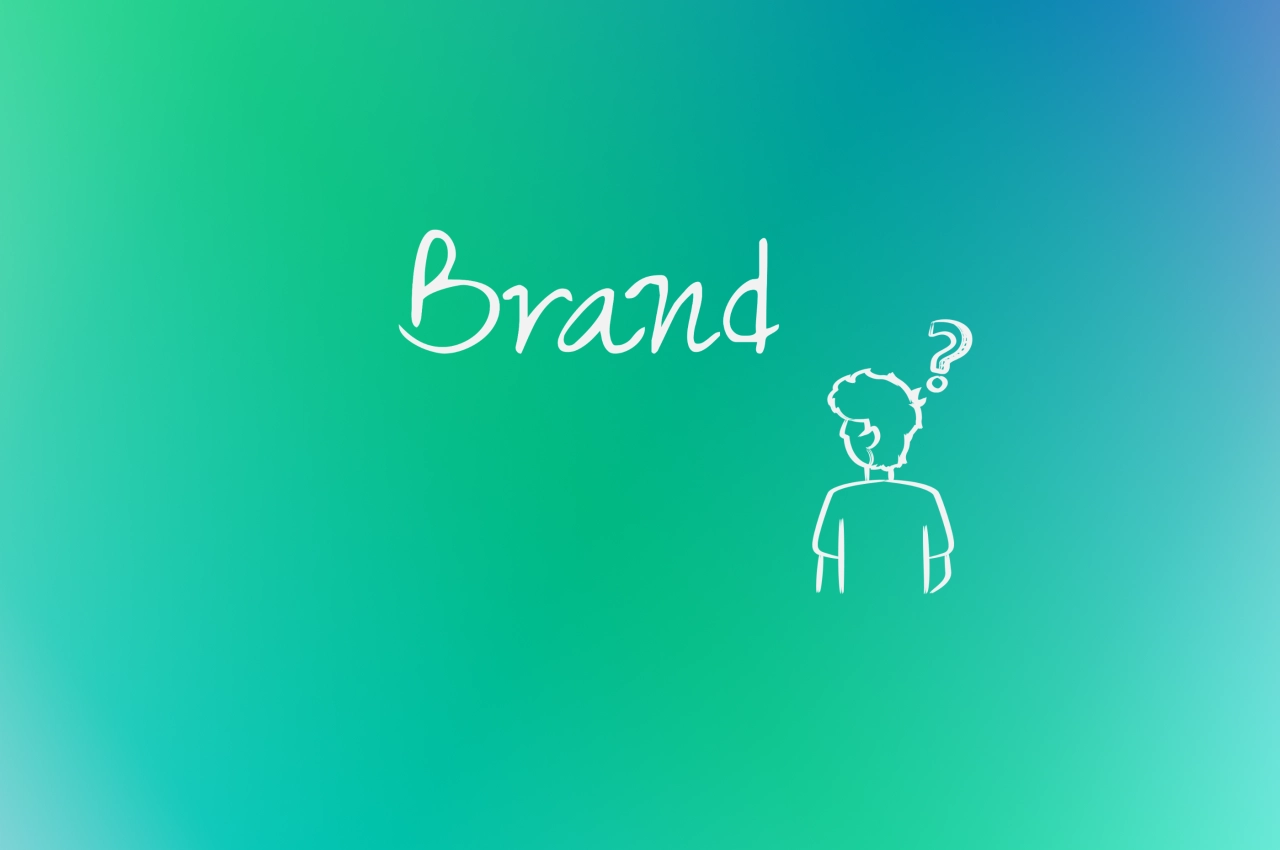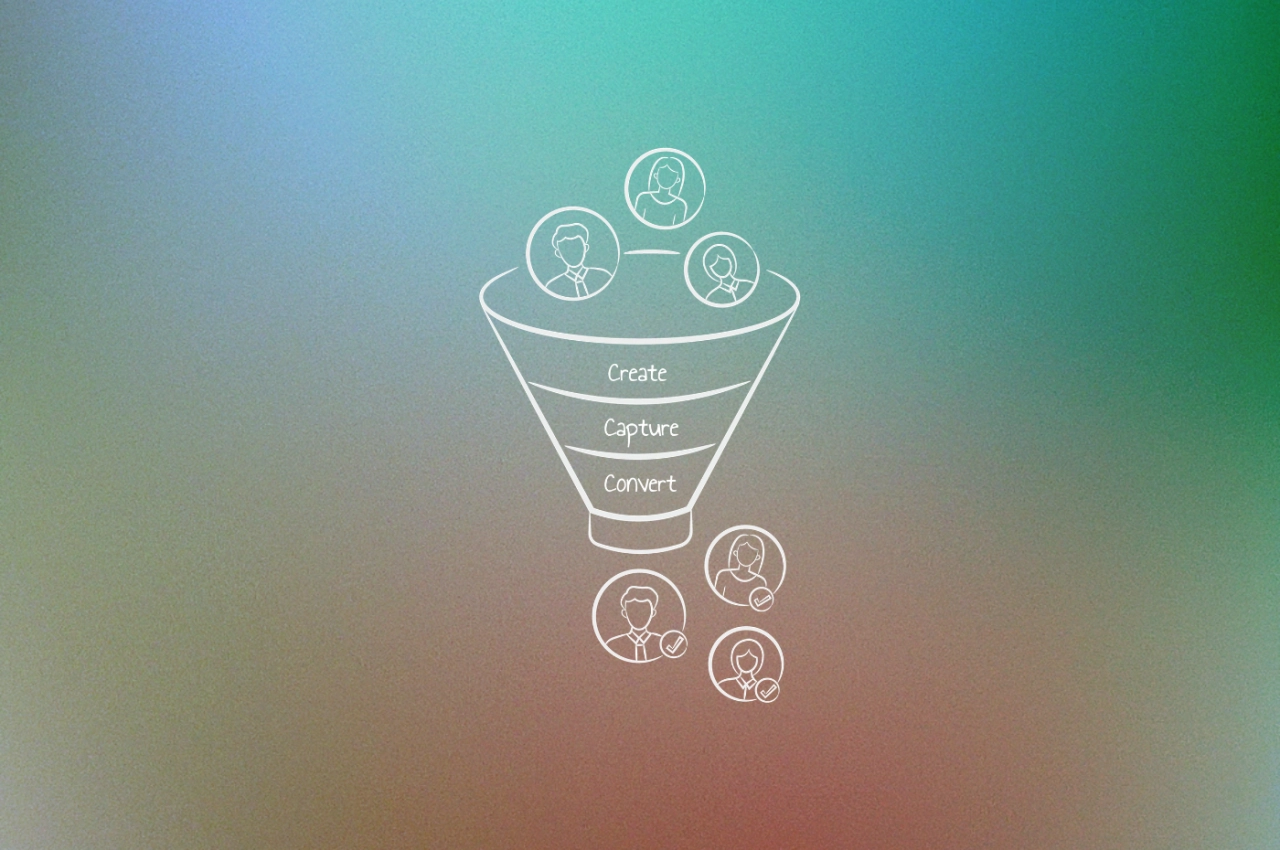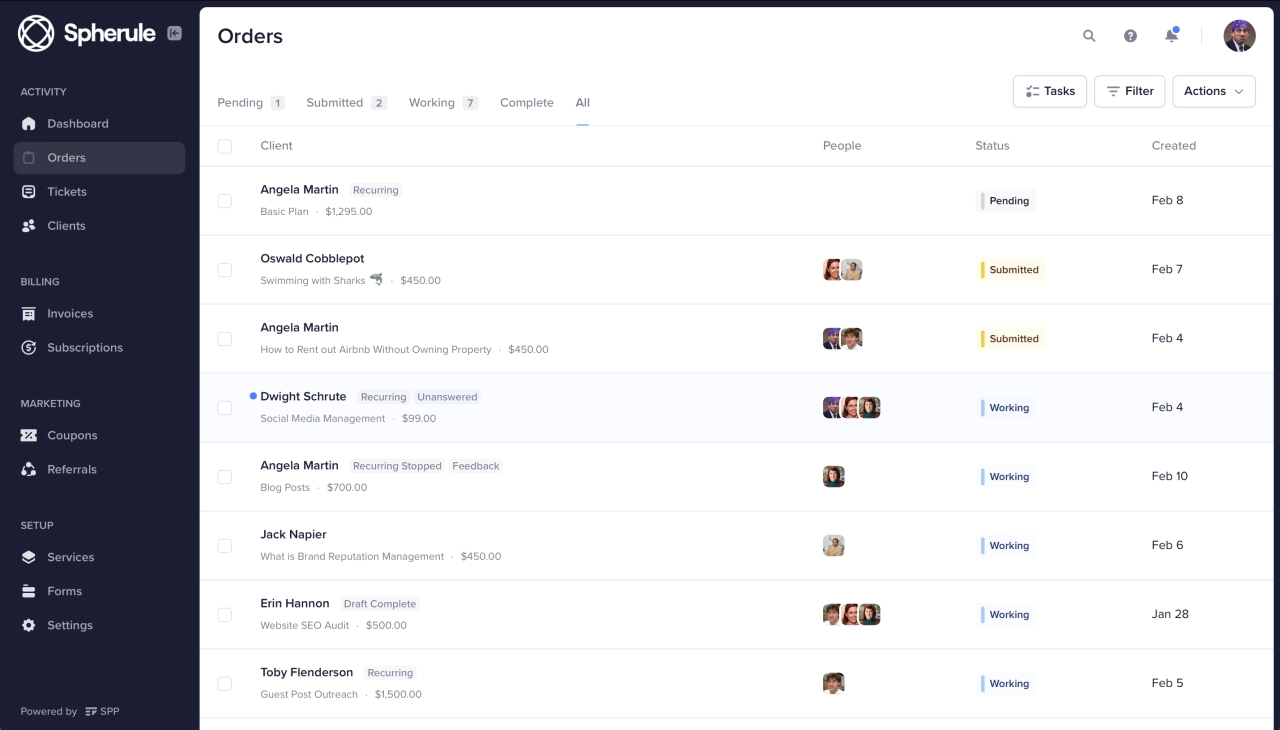- Demand generation is an important factor in the overall marketing funnel, but one that is often ignored compared to lead generation.
- In order to generate demand, use different methods such as free trials, offer downloadable assets, and optimize your copy.
- Use data-driven methods and experiment with different strategies in order to find the best demand generation strategy.
Demand generation is one of those topics many companies struggle with. Instead, they just focus on lead generation. But that isn’t necessarily a strategy that magically works.
The reason SEO, social media, paid, or email don’t work is more straightforward than many think: they’re not done properly (i.e., they’re not done as part of a demand generation funnel).
You could drive tens of thousands of views every day, collect all the likes and hearts in the world, and drive loads of clicks from your paid campaigns. If your marketing channels function in silos and if your tactics are applied randomly, you’ll never achieve what you’re looking for: revenue.
When your marketing channels are used cohesively, as part of a compelling story that guides ideal prospects towards your product, all your efforts align with a common purpose. SEO, social media, email, and paid advertising no longer feel aimless; instead, they become stages of a journey, each with its own goal: attracting potential customers, converting them into qualified leads, and ultimately transforming them into paying customers.
Why is demand generation so important, and how do you build a demand funnel on it?
The role of demand generation in the marketing funnel
The marketing funnel (also known as the sales funnel or the customer journey) is a model that represents the path a potential customer takes from being aware of a product or service to eventually making a purchase. It consists of different stages, each with its own unique goal and corresponding marketing strategies.
One of the most widely accepted marketing funnels consists of three stages:
awareness (also known as top of the funnel [TOFU])
consideration (also known as middle of the funnel [MOFU])
action (also known as bottom of the funnel [BOFU])
B2B demand generation plays a crucial role in the marketing funnel by creating awareness and interest in a product or service among potential customers. This involves generating not just interest in a product, but demand for it. The difference between interest and demand, here, lies in the fact that demand implies a sense of urgency and need for the product, while interest may just be a passing curiosity.

Imagine no one ever knew what a spreadsheet is. They’d never used one, they’d never bought one, and they wouldn’t even know spreadsheets existed. They’d just go on, doing accounting and financial forecasting and project tracking and so on the way they always had: with paper and calculators, or maybe some expensive solutions.
Before 1979 when VisiCalc, the first ever spreadsheet that was developed, came along, nobody even knew they needed a computerized spreadsheet. They had no interest in it because they didn’t know it existed. But once VisiCalc was introduced and people saw what it could do for them, demand for spreadsheets skyrocketed. Moreover, they attracted demand for Apple’s computers as well (as VisiCalc came with the Apple II, the hot new personal computer at the time). This is a classic example of demand generation in action.
Criteria to build a strong demand generation pipeline
Building an effective demand generation pipeline means you’re creating a system or process that captures and nurtures leads, and taking them through the marketing funnel towards making a purchase.
There are several important criteria to keep in mind when building a strong demand generation pipeline.
Collecting a bunch of email addresses (and bombarding them with cold emails) is not demand generation, it’s classic outbound lead generation. You can only say you’re building a demand generation pipeline if your process meets the following criteria.
Creates awareness
A solid, healthy demand generation pipeline consists of people who are aware there is a solution to their problem (and that you offer that solution). Keep in mind, there’s a difference between brand awareness and lead generation. More specifically, brand awareness refers to building a brand people can recognize, while awareness in a lead generation scenario refers to attracting those people who are actually interested in the solution.
Some examples of ways to create awareness for a product involve:
digital advertising (e.g., YouTube Ads)
content marketing (e.g., blogging, social media posts, newsletters, communities)
influencer marketing (e.g., getting individuals with a large following to promote your product)
webinars or virtual events (e.g., presenting your solution as an answer to a specific problem)
Generate demand
Awareness is great, but if it doesn’t lead to actual demand for your product or service, it’s not enough. Your demand generation pipeline needs to be filled with potential customers: people who are not only interested in your solution from afar, but want to buy it too.
The difference between someone who’s mildly aware of your existence and someone who is demanding your solution lies in the strength and urgency of their need for it.
Some examples of ways to generate demand for a product involve:
offering free trials or interactive demos
providing special discounts or promotions
creating a sense of scarcity (e.g., limited time offers, limited edition products)
leveraging social proof (e.g., customer reviews, testimonials)
Improve personas
If you want your demand generation pipeline filled with the right kind of people, you need to have a clear understanding of who your target audience is. Developing detailed B2B buyer personas can help you better tailor your marketing messaging and strategies to attract the right people to your pipeline.

It will:
find the best USP (unique selling proposition) for your product
help you create engaging content your audience resonates with
find the best channels to reach your target audience (i.e., the places your ideal buyers hang out)
understand the pain points and needs of your potential customers, so you can better position your product or service as the solution
create demand generation campaigns that speak directly to your target audience, increasing the chances of converting them into paying customers
train your customer care and sales teams to empathize with your audience’s issues
spend less on paid ads because it will take less time to refine your targeting
Some key aspects of a buyer persona to consider include:
demographics (age, location, education, income level)
pain points or challenges
goals or aspirations
preferred communication channels
influencers or thought leaders they follow
hobbies or interests
buying habits or decision-making process
You can learn more about your buyer personas by:
studying existing customers
running customer interviews
surveying the market
analyzing your website and social media data
using tools like Sparktoro to find influencers in your niche
testing out different hypotheses and refining your personas over time
Who your target audience is makes all the difference in the world. If they’re an SEO manager, you could explain how better data results in smoother workflows. If they’re a VP of marketing, you could promise them higher traffic and better conversions. Having a clear understanding of your buyer personas allows you to tailor your messaging and offerings to what will most appeal to them, increasing the chances of converting them into customers.
Optimize content
If you want people to give you their email address, you have to give them something in return. No one will give you their contact details willy-nilly, just because you ask them nicely. Offer them something they can’t refuse, like:
PDF with the latest industry research
free calculator that helps them figure out how much they could save by using your product
webinar that teaches them a new skill or helps them solve a common problem
interactive quiz or assessment that helps them answer a big question
podcast that enlightens them or provides them with genuinely new, interesting perspectives
spreadsheet with a template that helps them organize their workflow
infographic that presents your product in a visually appealing way
series of AI prompts built and refined for their specific industry
case studies that reflect how your product has helped other companies like theirs
The possibilities are endless. Just make sure the content aligns with your target audience’s interests and needs, and it positions your product or service as a must-have solution.
Once you have your options, optimize the content.
Creating an eye-catching, compelling landing page
A good lead gen landing pages covers at least the basics of persuasion:
clear and concise headline that grabs attention
list of benefits (not features)
social proof, such as testimonials or customer logos
irresistible call-to-action (CTA)
simple form that asks for minimal amount of information
Leveraging social media and influencers
Promote your content on social media channels where your target audience is most active. And don’t be afraid to ask industry influencers or thought leaders to share your content with their audiences as well. Their endorsement can go a long way in building trust and credibility for your brand.
Employing SEO techniques
Make sure your content is optimized for search engines by using relevant keywords, a well-written blog description, and a strong title. This will increase the chances of your content being discovered organically by potential customers.
Running paid campaigns
Some types of lead gen assets are suitable for paid campaigns. For instance, if you’re promoting a calculator or a set of free templates your audience would find useful, you can run targeted ads on social media platforms or Google Display to drive traffic to your lead generation landing page. Just make sure the cost per acquisition is within your budget and that you’re targeting the right audience.
Doing A/B testing
Don’t be afraid to experiment with different versions of your content or landing pages. With A/B testing and CRO, you can determine what works best for your audience and optimize accordingly.
Measure data
You’ll never know how well your demand generation strategy is actually doing unless you measure your efforts, every step of the way.
Thankfully, except from data points related to brand, consumer preference, and market intelligence (all of which can only be measured through extensive surveys), it’s not too hard to figure out the success of your demand generation strategy.
Often, you’ll get key demand generation metrics from the platforms you’re using already, for instance:
Twitter will tell you how many people clicked on a link
LinkedIn offers data on post performance
Facebook gives detailed insights for both organic and paid posts
Google Analytics will provide you with a treasure trove of data on who your customers are
HubSpot can even tell you specifically where your website visitors work, and which other pages they’ve seen on your site
marketing automation platforms like Marketo or Pardot can help track how many leads and conversions your content is generating
Remember that gathering a bunch of names in a list isn’t a demand generation strategy. You need to nurture, engage, and follow up with those leads to turn them into paying customers.
Make sure you measure your efforts in this area too:
How many prospects open your emails?
How many link clicks do you provide?
How many book a meeting, sign up for a free trial, or take other desired actions?
How many actually become customers?
By measuring data and tracking your progress, you can continuously improve and refine your demand generation strategy to achieve better results. So keep experimenting, keep analyzing, and always strive to understand your target audience better. The more you know about them, the more successful your demand generation efforts will be.
Make use of data-driven demand generation
There are countless demand generation channels, strategies, and tactics you can employ. They range from organic methods like blogging, SEO, and social media marketing to paid tactics like display ads, sponsored content, and influencer partnerships. The key is to identify the channels that work best for your target audience and invest in them accordingly.
Demand generation is not a one-size-fits-all game. Despite what growth gurus might tell you, there’s no actual recipe to driving more attention (and sales) to your brand. For some, social media works wonders and TikTok reigns supreme. For others, good, old-fashioned Search Engine Optimization is a winner.
One thing’s for sure: your sales and marketing teams will both benefit from a solid demand gen strategy. It will help you reach more potential customers, generate more marketing qualified leads and sales qualified leads, boost your conversion rate, and drive more revenue into your business.
The most effective way to create a demand generation funnel is by experimenting, collecting data, learning more about your audience, and adapting your strategy as needed. By using data-driven insights, you can refine and optimize your approach to drive better results (as opposed to throwing balls in air and hoping one of them lands in the right hoop).




